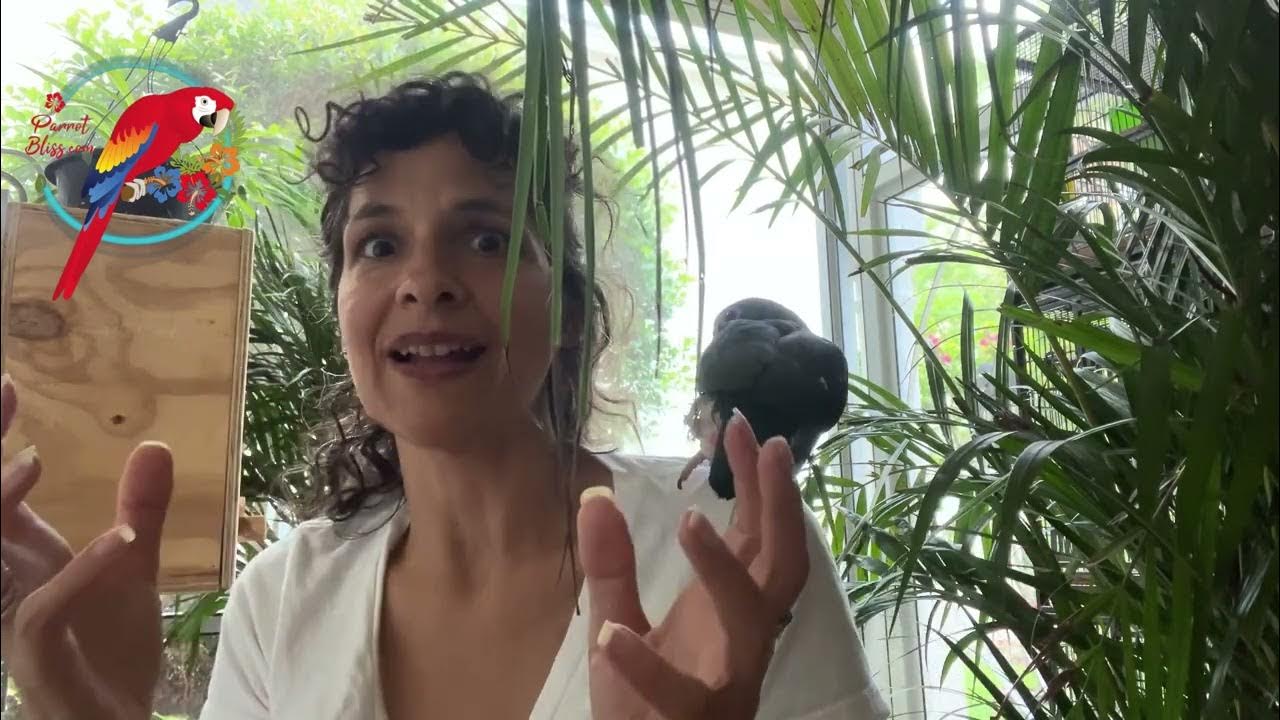Polar Blue Parrot Cichlid | My Experience Keeping
Summary
TLDRIn this video, Connor shares his experience keeping the polar blue parrot cichlid, a relatively new hybrid fish. He discusses their growth, size, and aggression, emphasizing the inaccuracies found in online profiles compared to his observations. Connor recommends a minimum tank size of 20 gallons for a pair and notes their semi-aggressive nature, especially towards smaller fish. He highlights their dietary needs, suggesting a varied diet that includes sinking pellets and frozen treats. Overall, Connor praises the fish for their vibrant colors and personality, making them a great addition to a cichlid tank while cautioning potential owners about their compatibility with other species.
Takeaways
- 🐟 The polar blue parrot cichlid is a relatively new hybrid fish with limited information available online.
- 📈 Growth of polar blue parrots is often misrepresented; they typically reach around 3-4 inches, not the 8 inches stated in some profiles.
- 🏠 A minimum tank size of 20 gallons is recommended for a pair of polar blue parrots, with 29 gallons being ideal for a community setup.
- ⚔️ Polar blue parrots tend to be more aggressive than blood parrots, especially towards smaller or peaceful fish.
- 👥 It's advisable to keep polar blue parrots with other semi-aggressive cichlids rather than community fish like tetras or livebearers.
- 🍽️ A varied omnivorous diet is essential for polar blue parrots, including sinking cichlid pellets, blood worms, and flakes.
- 💧 Water parameters should ideally be a pH of 6.5 to 8.0, temperature between 72-80°F, and general hardness of 2 to 25 degrees.
- 🤝 Compatibility improves over time; initial aggression towards tank mates often decreases as the fish mature.
- 🐠 Polar blue parrots exhibit vibrant colors and interesting behaviors, making them visually appealing and engaging.
- 💬 Viewers are encouraged to share their experiences with polar blue parrots or ask questions in the comments.
Q & A
What is the polar blue parrot cichlid?
-The polar blue parrot cichlid is a relatively new hybrid fish, recognized for its unique appearance and behavior.
How do the growth and size of polar blue parrots compare to blood parrots?
-Polar blue parrots generally grow to about 3 to 4 inches, which is smaller than the blood parrots that can reach up to 8 inches.
What tank size is recommended for keeping polar blue parrots?
-A minimum of 20 gallons is recommended for a pair of polar blue parrots, with 29 gallons being preferable for a more comfortable environment.
How aggressive are polar blue parrots compared to other fish?
-Polar blue parrots are considered semi-aggressive, more aggressive than blood parrots, and can show aggressive behavior towards smaller or peaceful fish.
What types of fish can polar blue parrots coexist with?
-They can coexist with other robust cichlids and semi-aggressive fish but may harass smaller, more peaceful fish like tetras and livebearers.
What is the recommended diet for polar blue parrots?
-Polar blue parrots thrive on a varied omnivore diet that includes cichlid pellets, bloodworms, and flake foods, promoting good color and health.
What water parameters are suitable for polar blue parrots?
-They prefer a pH of 6.5 to 8.0, a temperature range of 72 to 80°F, and a general hardness of 2 to 25 degrees.
How do polar blue parrots behave in terms of tank interaction?
-They are very active, often swimming around and interacting with other fish in the tank, displaying a lively personality.
What considerations should be taken into account before getting polar blue parrots?
-Consider their aggression towards smaller fish and ensure that they are kept in a suitable tank environment, ideally with robust cichlids.
What personal experience does the speaker share about keeping polar blue parrots?
-The speaker shares positive experiences regarding their growth, appearance, and interaction with other fish, noting their impressive coloration and active behavior.
Outlines

This section is available to paid users only. Please upgrade to access this part.
Upgrade NowMindmap

This section is available to paid users only. Please upgrade to access this part.
Upgrade NowKeywords

This section is available to paid users only. Please upgrade to access this part.
Upgrade NowHighlights

This section is available to paid users only. Please upgrade to access this part.
Upgrade NowTranscripts

This section is available to paid users only. Please upgrade to access this part.
Upgrade NowBrowse More Related Video

Is There a Medium-sized 🦜 Parrot That’s Got All That? #parrot_bliss #parrot

hi.

8 REASONS WHY 2026 TOYOTA RAV4 IS BETTER THAN 2025 RAV4 / DAVID IS IN TOYOTA CITY IN JAPAN TO REPORT

A Fish In This Lake Evolved Into 850 Different Species

RGK Tiga Wheelchair + Attitude Handbikes | Some things are meant to be together

Sukses Budidaya Ikan Hias di Lahan Sempit
5.0 / 5 (0 votes)